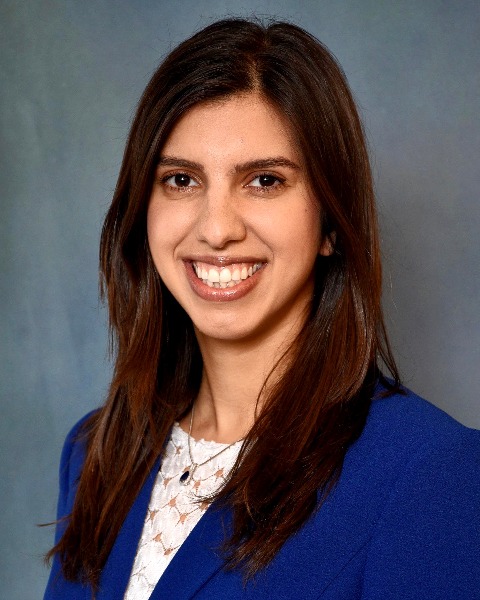Health Equity/Social Determinants of Health
Category: Abstract Submission
Health Equity/Social Determinants of Health V
179 - Trends in Proportions of Female Representation at American Society of Pediatric Nephrology Pediatric Academic Society Meetings 2012-2021
Monday, April 25, 2022
3:30 PM - 6:00 PM US MT
Poster Number: 179
Publication Number: 179.412
Publication Number: 179.412
Bahar Barani, Children's Mercy Hospital, Overland Park, KS, United States; David Selewski, Medical University of South Carolina College of Medicine, Charleston, SC, United States; Danielle E. Soranno, University of Colorado School of Medicine, Denver, CO, United States; Darcy K. Weidemann, Children's Mercy Kansas City, Kansas City, MO, United States

Bahar Barani, MD
resident
Children's Mercy Hospital
Overland Park, Kansas, United States
Presenting Author(s)
Background: Women are under-represented in academic medicine. Prior studies of adult nephrology have demonstrated disparities in female faculty representation in leadership positions, and as invited science moderators and speakers.
Objective: Determine the representation of female physicians in leadership and speaking roles in national pediatric nephrology scientific meetings.
Design/Methods: Program guides from the American Society of Pediatric Nephrology annual scientific meeting at the Pediatric Academic Society was obtained from 2012-2022 and data abstracted regarding gender and roles: speaker, chair/moderator, and lifetime achievement awardee. Gender was determined based on the individual’s name. When the gender was indeterminant based on name, two separate internet-based searches for the individual’s image and gender-identifying data was performed. The proportions were compared to data from the American Board of Pediatrics Subspecialty Certification Database. We performed a time series analysis using linear regression, with the year as the independent variable and the proportion of women as the dependent variable. Representation ratios were calculated for speaker, chair/moderator, and awardee roles.
Results: The proportion of female speakers increased over 10 years, with a total representation of 46.9% which was proportionate to the overall workforce of 45.9% women ever certified (Table 1). Time series analysis showed that the proportion of women speakers increased significantly by 3.5% per year (p < 0.001, 95% CI 1.9 -5.1%). The percentage of women chairs or moderators also increased over time, 26.1% in 2012 up to 63% in 2021. Time series analysis demonstrated that the proportion of women chairs or moderators increased by 3.2% over time (p=0.004, 95% CI 1.0% - 5.3%). A total of 8 women have received lifetime achievement awards over the past 10 years, which is 34.8% of the total awards (n=23) given, not statistically significant based on Chi-square analysis (difference 11.1%, 95% CI -9.4% - 27.3%, p=0.29). No trend was detected for lifetime achievement awards with linear regression (1.2%, p=0.741, 95% CI -.065 - 9%).Conclusion(s): This is the first study to describe the trends of women faculty representation at a national pediatric nephrology meeting. We found proportionate representations of gender representation with regards to speakers and chairs or moderators, although our data is limited by comparison to ABP data which is cumulative “ever certified” and includes a disproportionate representation of male faculty during earlier certification periods who may not be actively practicing pediatric nephrology.
Bahar Barani CV .pdf
Objective: Determine the representation of female physicians in leadership and speaking roles in national pediatric nephrology scientific meetings.
Design/Methods: Program guides from the American Society of Pediatric Nephrology annual scientific meeting at the Pediatric Academic Society was obtained from 2012-2022 and data abstracted regarding gender and roles: speaker, chair/moderator, and lifetime achievement awardee. Gender was determined based on the individual’s name. When the gender was indeterminant based on name, two separate internet-based searches for the individual’s image and gender-identifying data was performed. The proportions were compared to data from the American Board of Pediatrics Subspecialty Certification Database. We performed a time series analysis using linear regression, with the year as the independent variable and the proportion of women as the dependent variable. Representation ratios were calculated for speaker, chair/moderator, and awardee roles.
Results: The proportion of female speakers increased over 10 years, with a total representation of 46.9% which was proportionate to the overall workforce of 45.9% women ever certified (Table 1). Time series analysis showed that the proportion of women speakers increased significantly by 3.5% per year (p < 0.001, 95% CI 1.9 -5.1%). The percentage of women chairs or moderators also increased over time, 26.1% in 2012 up to 63% in 2021. Time series analysis demonstrated that the proportion of women chairs or moderators increased by 3.2% over time (p=0.004, 95% CI 1.0% - 5.3%). A total of 8 women have received lifetime achievement awards over the past 10 years, which is 34.8% of the total awards (n=23) given, not statistically significant based on Chi-square analysis (difference 11.1%, 95% CI -9.4% - 27.3%, p=0.29). No trend was detected for lifetime achievement awards with linear regression (1.2%, p=0.741, 95% CI -.065 - 9%).Conclusion(s): This is the first study to describe the trends of women faculty representation at a national pediatric nephrology meeting. We found proportionate representations of gender representation with regards to speakers and chairs or moderators, although our data is limited by comparison to ABP data which is cumulative “ever certified” and includes a disproportionate representation of male faculty during earlier certification periods who may not be actively practicing pediatric nephrology.
Bahar Barani CV .pdf
